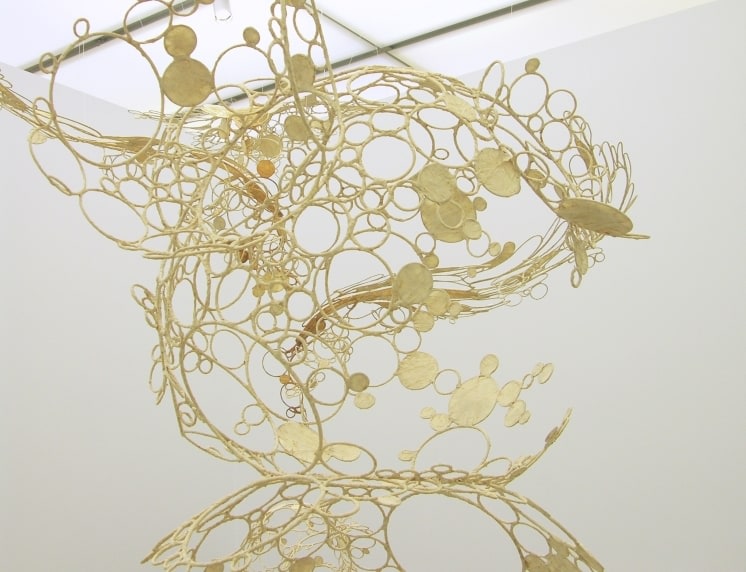
Ranjani Shettar's father was convinced his daughter should become an artist from the time she was five years old, Ranjani made the decision for herself at the ripe old age of 13. "I started drawing as a little child and my parents nourished my interest at every stage," she remembers, recounting several childhood stories involving chalk drawings on the floor and a decided aversion to felt-tip pens.
Today, Shettar has exhibited across the world, from New York and Paris to Sydney and Sharjah. "When I'm home, I'm busy in my studio creating, reading, and reflecting. When I travel, it is the other side of the coin; show openings, vising museums, seeing original works of art, meeting people. I enjoy both, as one balances the other."
Sometimes the travel provides direct inspiration, 'Me, no, not me, buy me, eat me, wear me, have me, me, no, not me', an installation of woven vessels (made from steel from junkyard-bound cars) came out of seeing an industrial scrap yard in Sharjah, and questions our ideas of consumption, recycling, economics, and luxury.
Most works, however, arise from Shettar's love of nature: 'In Bloom' looks like a chandelier of pink-purple lacquered wooden beads (handmade by local craftsmen) and was inspired by bougainvillea; 'Vasanta' is a 'net' of threads joined by hand-molded beeswax pellets; 'Sun-sneezers blow light bubbles' consists of swirls and circles reminiscent of soap bubbles (or cell division), made from tamarind kernel powder and muslin.
In fact, Shettar's wide range of new, interesting, and organic material is her work's most distinct- and applauded- feature. "I find it fascinating how things are made for various purposes and I see it as a rich source of inspiration," says the artist, from her studio a few hours outside Bangalore. "I can watch clay tiles, coir ropes, salt or biscuits in a factory being made for hours, and (I can) be blank with no thoughts in my mind."
-Divia Thani Daswani